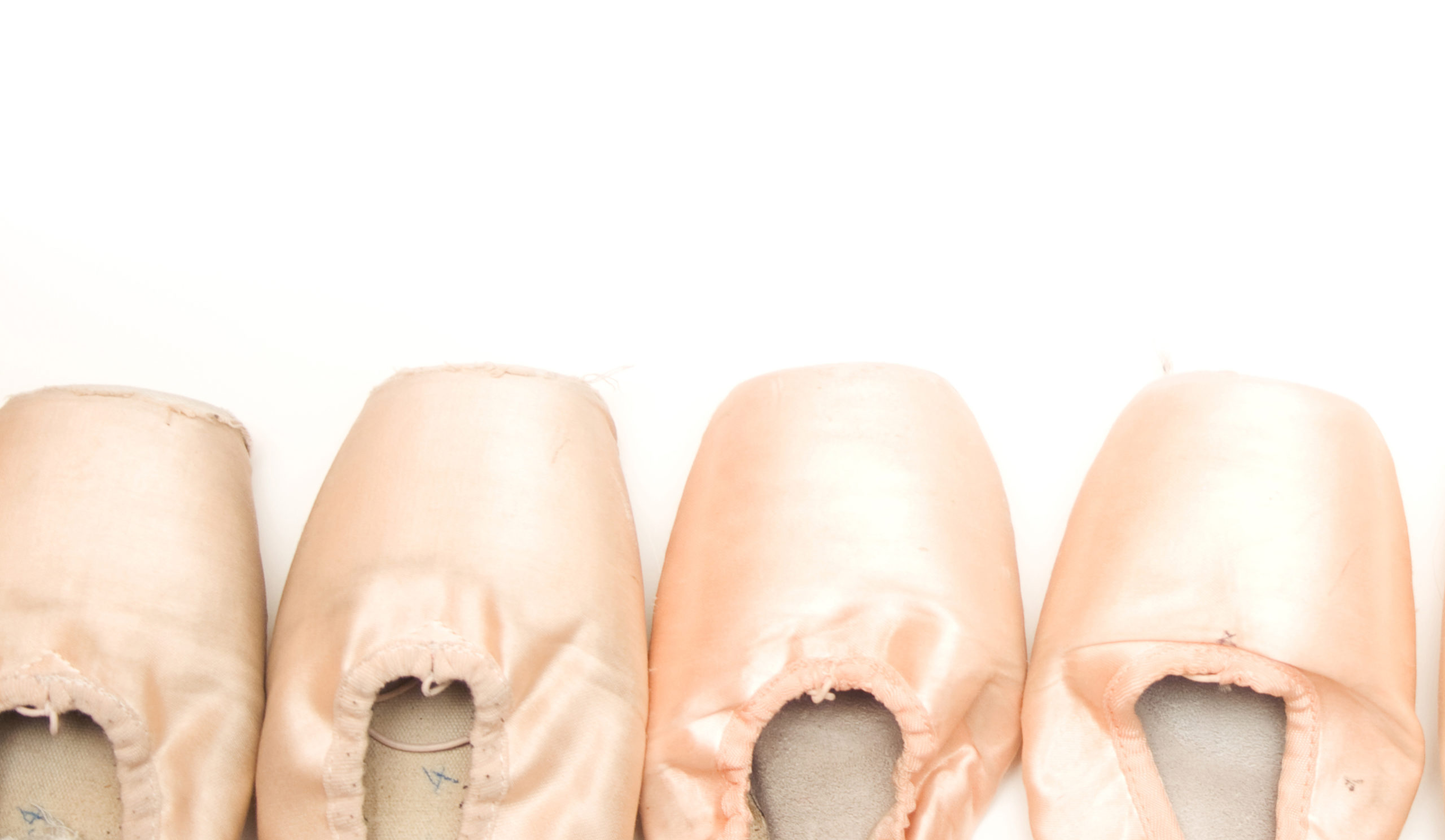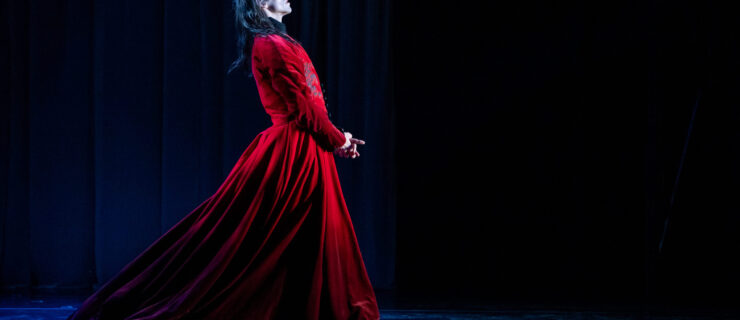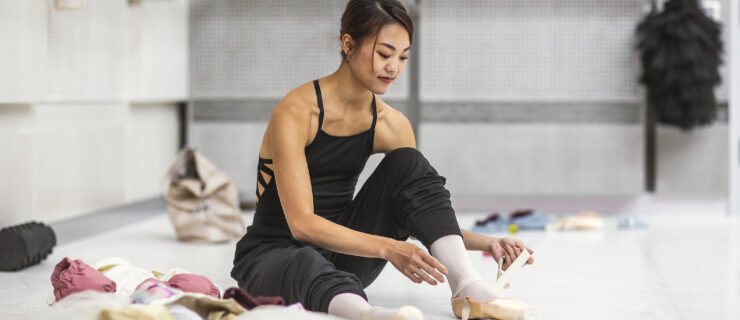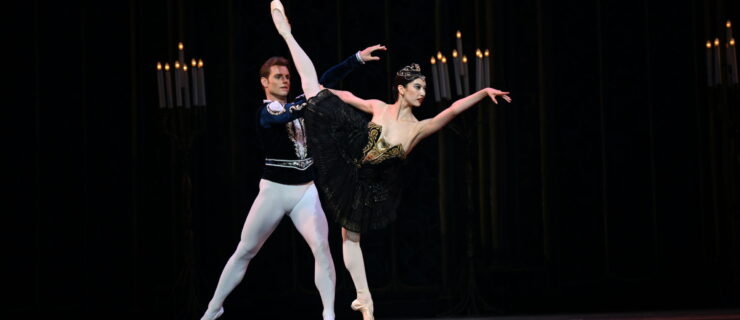Quite A Character
Character dancer: To most, it’s a term that evokes an older artist gesticulating dramatically as she savors her last moments in the spotlight. Or, if you’re in St. Petersburg or London, it indicates a member of a subset of classical dancers, a kind of alternate team trained to play the Hilarions and the Lady Capulets, and to fill out Swan Lake’s suite of international dances.
But there’s a new crop of actors in today’s ballet companies, and they don’t fit the stereotypes. Instead, they’re promising corps de ballet members who have carved out a specialized niche, a way to make sure they’re never lost in the corps’ sea of pretty faces. Regularly taking on roles like Bathilde in Giselle, Carabosse in Sleeping Beauty or Herr Drosselmeyer in The Nutcracker is a way for these dancers to get noticed in a company where they might otherwise remain anonymous. Character parts offer them chances to occupy center stage, to read their names in reviews, to develop and perfect and own something. And if the hoped-for big role does come their way, these dancers will already know how to command the audience’s attention.
How does this kind of dramatic talent emerge? Gil Boggs, artistic director of Colorado Ballet—and, during his years as a dancer with American Ballet Theatre, an accomplished character artist—says it’s partly innate ability. “You look for dancers who seem to have it naturally,” he says. “Watching performance after performance as artistic director, you can tell who is able to express themselves clearly onstage and develop a role.” Demonstrating an interest in dancing character parts, however, can’t hurt. ABT corps member Isaac Stappas, who now frequently steals the show as Bottom in Frederick Ashton’s The Dream and Catalabutte in The Sleeping Beauty, first tried out onstage acting as Von Rothbart in Swan Lake. “When I joined the company, I was so in awe of Ethan Brown’s Von Rothbart,” he says. “He was fascinating to watch. I remember sitting and observing his rehearsals all the time.” Eventually artistic director Kevin McKenzie noticed Stappas’ interest in the part, and—ping!—Stappas’ name appeared on the casting list.
Though getting cast can (sometimes) be that easy, the roles themselves—contrary to popular belief—aren’t. “In a character part, the dancer doesn’t have the technical framework of a traditional role to fall back on,” says Mikko Nissinen, artistic director of Boston Ballet. “It’s all acting. People really have to go deep into their emotional side, and it takes guts to get out there and do that.” Boggs agrees. “You’re not just putting a smile on your face and dancing a variation,” he says. “You’re telling a story through mime and expression. You have to be able to command the stage.”
To create a three-dimensional persona that also projects to the balcony, dancers must do a lot of homework. “You have to make specific, detail-oriented choices,” Stappas says. “Whether your muscles are tensed or relaxed, where your eyes are focused—there are many ways to say something onstage, and you have to figure out how this person would say it.” New York City Ballet corps member Georgina Pazcoguin, the company’s go-to for dramatic parts, remembers the feverish preparation that went into her first Carabosse. “It seems funny now, but I called my dad and asked him to send me tapes of every Disney movie that had an evil witch!” she says. “I took a lot from 101 Dalmations’ Cruella de Vil in particular.” Studying the cartoons’ facial expressions, she says, helped her figure out how to communicate with her face in a way that was believable up close but would still read from far away.
Though creating a character and getting a moment in the limelight is exciting, some dancers do have doubts about getting typecast as a “character person.” “I’ve gone through periods where I’ve thought that this might be a self-limiting ability,” Pazcoguin says. “I love acting, but my first dream was dancing, and I don’t want to be seen as an actor first and a dancer second.” Most artistic directors, however, insist that these are unfounded fears. “Dancers have this underlying anxiety: ‘Uh oh, I’m cast as Sancho Panza; they see me as a character dancer now,’” Boggs says. “But no! It’s an honor. The characters are responsible for carrying the story, and the director is trusting you with that.” Plus demonstrating another facet of your artistic personality is never a bad thing. “It doesn’t limit you, it expands you,” Nissinen says. “Suddenly your rainbow has one more color. That doesn’t mean it’s the only color.”
Sometimes character roles involve real dancing, too. Pazcoguin’s favorite character part is mambo queen Anita from West Side Story Suite; Stappas’ is the swashbuckling Tybalt. And no matter how much or how little technique is required, every character part helps dancers develop skills they’ll need if they want to tackle leading roles. “Even when you’re doing a lot of dancing, you still have to think about your facial expressions and the quality of your movement onstage,” Stappas says. “During a romantic pas de deux, everyone looks at your face along with your body. For most audience members it’s just as important as the technique.”
Recently, Pazcoguin has seen her character work pay off in a concrete way. “I have a feeling that, after watching me work all these character roles, people are beginning to think, ‘If she can excel here, maybe she can handle something more technical,’” Pazcoguin says. Last season, she was cast as the impossibly nimble demi-soloist in Balanchine’s Scotch Symphony.
“Not only have acting parts helped me find a place in this huge company, they’ve also given me the confidence to be myself onstage,” Pazcoguin says. “And you can’t dance to your fullest capacity until you’re comfortable being yourself.”





